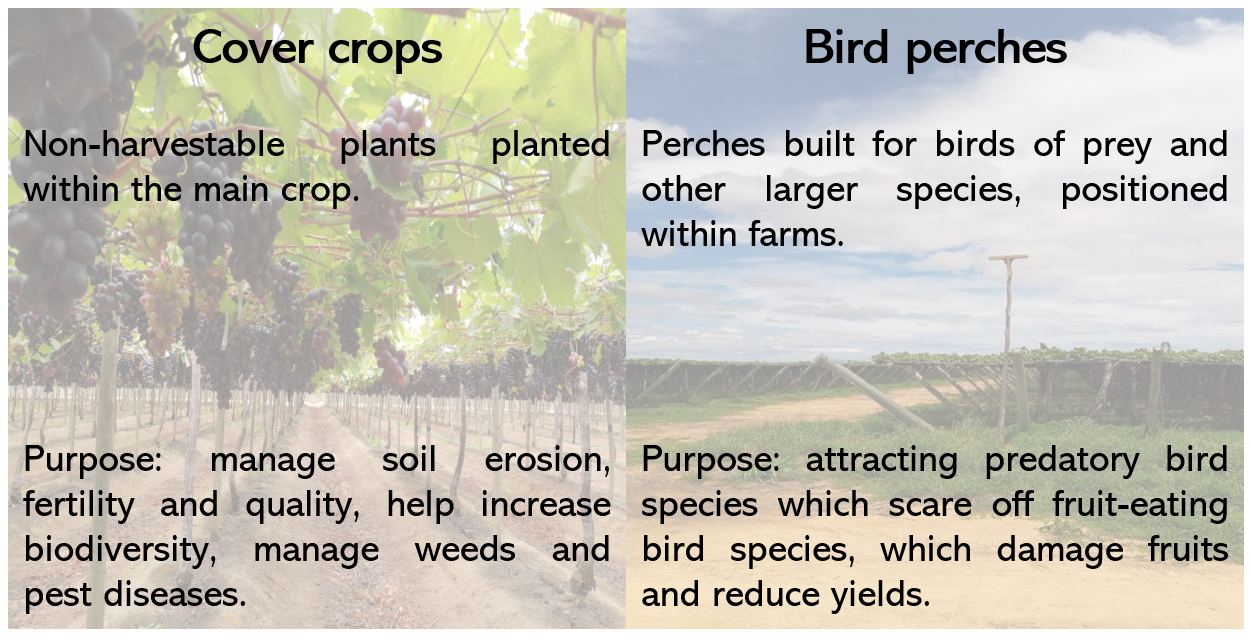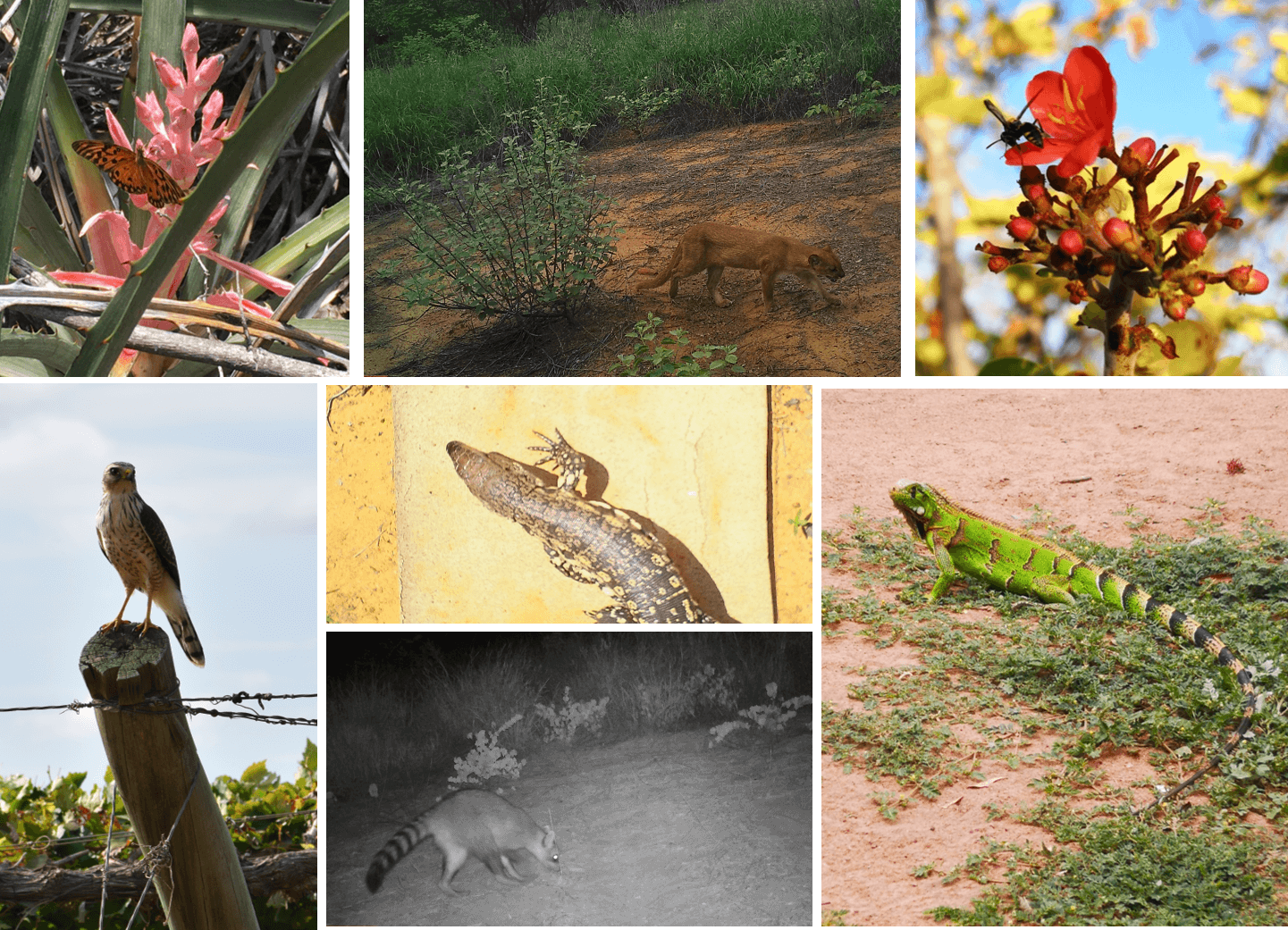SUFICA project: Addressing the research bias in agroecology
Blog by Natalia Zielonka & Dr Lynn Dicks
In its early days, the COVID19 pandemic made us all think about the vulnerability of modern, globalised food supply chains. Scientific research that explores how to secure food for everyone on Earth without further destroying biodiversity or adding to climate change is now more important than ever before. Research on sustainable food production is heavily concentrated in Europe and North America, yet many of the major global food crops are primarily produced in low- or middle-income countries, where research capacity and funding are limited. This means that scientific development of environmentally-friendly farm management practices is missing from some of the world’s most productive regions, hindering the progress of sustainable agriculture. This project, Sustainable Fruit Farming in the Caatinga (SUFICA) directly addresses this issue. The project has established an international partnership of agro-ecological researchers across Brazil and Chile, to design and test techniques that improve wildlife and ecosystem management on farms in north-east Brazil, one of the country’s poorest regions. SUFICA is funded by the Newton-Fund (UK) and ANID (Chile).
Biodiversity within agriculture
Today, almost 40% of the world’s land surface is used for agriculture. This generally entails the conversion of diverse natural habitats to relatively species-poor artificial ones (Millennium Ecosystem Assessment 2005; Zabel et al. 2019). Biodiversity loss has become a global crisis, as we have entered the 6th Mass Extinction (Ceballos et al. 2015), with current extinction rates 1000 times higher than historic rates (Pimm et a. 2014), and 27% of all assessed species today being threatened with extinction (IUCN, 2020).
Most threatened species are threatened by habitat loss, and agricultural expansion is the main cause (Pereira et al. 2012). Global agriculture is not expanding uniformly. Overall expansion has stopped in Europe, for example, but other regions are undergoing rapid agricultural development and becoming global exporters, producing food for the whole world. South America, Africa and Australia are currently under the strongest pressure to produce more food, and they are also some of the most diverse regions of the world, home to unique and threatened species (Zabel et al. 2019; Tilman et al. 2017). The human population is still increasing, and diets are changing to include higher proportions of more land-intensive products such as meat (Tilman 2014), so demand for agricultural products is unlikely to decrease in the foreseeable future (Tilman et al. 2011; Tilman et al 2017). Further agricultural intensification or expansion seem inevitable.
While agricultural expansion into natural habitats is always bad for biodiversity, intensification doesn’t have to be. Intensification can be achieved in ways that spare and protect natural habitats (Phalan et al. 2016). High-yielding food production systems can operate within thriving agricultural ecosystems, rich in elements of biodiversity that support production, such as pollinators and natural enemies of pests. This is known as ‘ecological intensification’. While ecologically-intensified agricultural ecosystems will never support the special and unique wild communities found in truly natural habitats, they can be part of a strategy to stop agricultural expansion. Such systems have added benefits of being more resilient to environmental change and providing a less hostile environment for threatened species to move through or live in.
Local solutions need local research
As environmental awareness increases, farmers come under pressure from consumers and international markets to reduce agrochemical use and promote nature-based solutions. This creates a demand for tried-and-tested ‘ecological intensification’ practices that support beneficial species on farms without compromising production. This demand must be exploited as part of global efforts to prevent biodiversity loss. But such practices do not come in ‘one-size-fits-all’. Their design, and their likely effectiveness, are specific to farm systems, socio-economic contexts and geographies. Research to develop them must be in partnership with farmers and must be carried out locally.

In a recent publication, Van der Meer and colleagues (2020) compared the geographical distribution of fruit production with the number of scientific studies on the impacts of fruit farming on biodiversity. What they found is truly eye opening. Most research that can inform sustainable and nature-friendly fruit farming is from continents with the least production and lowest agricultural growth potential.
- North America, Oceania and Europe are leaders in research with 30, 13.5 and 11 studies published per megaton of fruit produced, respectively.
- Asia, the key fruit exporter, produces 0.5 studies per megaton, followed by South America, publishing 0.33 studies per megaton.
This disparity really hinders global progress towards saving biodiversity.
Bridging the gap with research in Brazil
Sustainable Fruit Farming In The Caatinga (SUFICA) project, funded by Newton Fund (UK) and ANID (Chile), has taken up the challenge. It is based in the highly biodiverse Caatinga biome of North-east Brazil, a region undergoing rapid growth of fruit agriculture (known locally as ‘fruticulture’). The aim of the project is to enhance sustainability and promote biodiversity-based solutions in fruticulture.
Brazil is one of the top ten exporters of crops worldwide (FAO 2019) and fruticulture in North-east Brazil has been expanding particularly rapidly. For example, the annual area of harvested grapes increased by 90 times between 1985-1995 (Selwyn 2010). This region is optimal for grape production, as the stable and hot climate of the semi-arid Caatinga enables year-round production. There are two grape harvests a year here, doubling productive capacity relative to other regions further south. The growth of fruticulture in the region is key to poverty reduction and regional development, but it is also a serious threat to the biodiverse Caatinga, which is home to over 2000 species of plants and vertebrates. By 2010, 40% of Caatinga was already lost to deforestation (Schulz et al. 2017), and degradation of the remaining Caatinga is widespread.
The SUFICA project is an international collaboration of researchers from the UK, Chile and Brazil, working with the whole supply chain from farmers in Brazil through international fruit supply companies to a UK supermarket (Waitrose). The project also involves the Cool Farm Alliance, a global partnership of agri-food companies developing software to enable farmers globally to measure and reduce their environmental impacts.
SUFICA aims to experimentally test ‘ecological intensification’. Studies from North America and Europe have shown promise in ecological intensification, but data from semi-arid regions, such as North-east Brazil, are lacking. SUFICA is testing management practices co-developed with the farmers for this specific landscape, using a rigorous experimental set-up. Two practices have been selected – cover crops and bird perches.

The project has just passed its mid-point. So far, baseline biodiversity data have been collected on grape and mango farms for 2 seasons. SUFICA researchers have surveyed birds, mammals, reptiles, plants and invertebrates, collected soil samples and performed pollination experiments, identifying key species that live on the farms and finding diverse communities in the surrounding Caatinga. This is promising, as all these species contribute to the functioning of the ecosystem and some could directly support fruit production. The field elements of the project are on-hold during COVID lockdown, but we hope to continue with our experiment in 2021.
A key goal for SUFICA is to promote science-informed management practices to farmers across South America and other tropical regions. Our researchers are involved in outreach activities with farmers, educators and the public to promote biodiversity-friendly farming, and our study findings will be published in international journals.

References:
Ceballos, G., Ehrlich, P.R., Barnosky, A.D., García, A., Pringle, R.M. & Palmer, T.M. 2015. Accelerated modern human-induced species losses: Entering the sixth mass extinction. Science Advances 1: e1400253.
FAO. 2019. Food Outlook – Biannual Report on Global Food Markets. Rome.
Godfray HCJ, Beddington JR, Crute IR, Haddad L, Lawrence D, Muir JF, Pretty J, Robinson S, Thomas SM, Toulmin C. 2010. Food Security: The Challenge of Feeding 9 Billion People. Science 327:812-818.
IUCN. 2020. The IUCN Red List of Threatened Species. Version 2019-3, Available from <https://www.iucnredlist.org> (accessed 13/01/2020 2020).
Millennium Ecosystem Assessment, 2005. Ecosystems and Human Well-being: Synthesis. Island Press, Washington, DC.
Phalan, B., Green, R.E., Dicks, L.V., Dotta, G., Feniuk, C., Lamb, A., Strassburg, B.B.N., Williams, D.R., Ermgassen, E.K.H.J.z., Balmford, A., 2016. How can higher-yield farming help to spare nature? Science 351, 450-451.
Pereira HM, Navarro LM, Martins IS. 2012. Global Biodiversity Change: The Bad, the Good, and the Unknown. Annual Review of Environment and Resources 37:25-50.
Pimm SL, Jenkins CN, Abell R, Brooks TM, Gittleman JL, Joppa LN, Raven PH, Roberts CM, Sexton JO. 2014. The biodiversity of species and their rates of extinction, distribution, and protection. Science 344:1246752.
Schulz C, Koch R, Cierjacks A, Kleinschmit B. 2017. Land change and loss of landscape diversity at the Caatinga phytogeographical domain – Analysis of pattern-process relationships with MODIS land cover products (2001–2012). Journal of Arid Environments 136:54-74.
Selwyn BEN. 2010. Globalized Horticulture: The Formation and Global Integration of Export Grape Production in North East Brazil. Journal of Agrarian Change 10:537-563.
Tilman, D., Balzer, C., Hill, J., Befort, B.L., 2011. Global food demand and the sustainable intensification of agriculture. Proceedings of the National Academy of Scienc es of the United States of America 108, 20260-20264.
Tilman, D., Clark, M., 2014. Global diets link environmental sustainability and human health. Nature 515, 518.
Tilman, D., Clark, M., Williams, D.R., Kimmel, K., Polasky, S., Packer, C., 2017. Future threats to biodiversity and pathways to their prevention. Nature 546, 73-81.
Van der Meer, M., Kay, S., Lünscher, G. & Jeanneret, P. 2020. What evidence exists on the impact of agricultural practices in fruit orchards on biodvieristy? A systematic map. Environmental Evidence, 9: 2.
Zabel F, Delzeit R, Schneider JM, Seppelt R, Mauser W, Václavík T. 2019. Global impacts of future cropland expansion and intensification on agricultural markets and biodiversity. Nature Communications 10:2844
Natalia Zielonka
09.08.20


